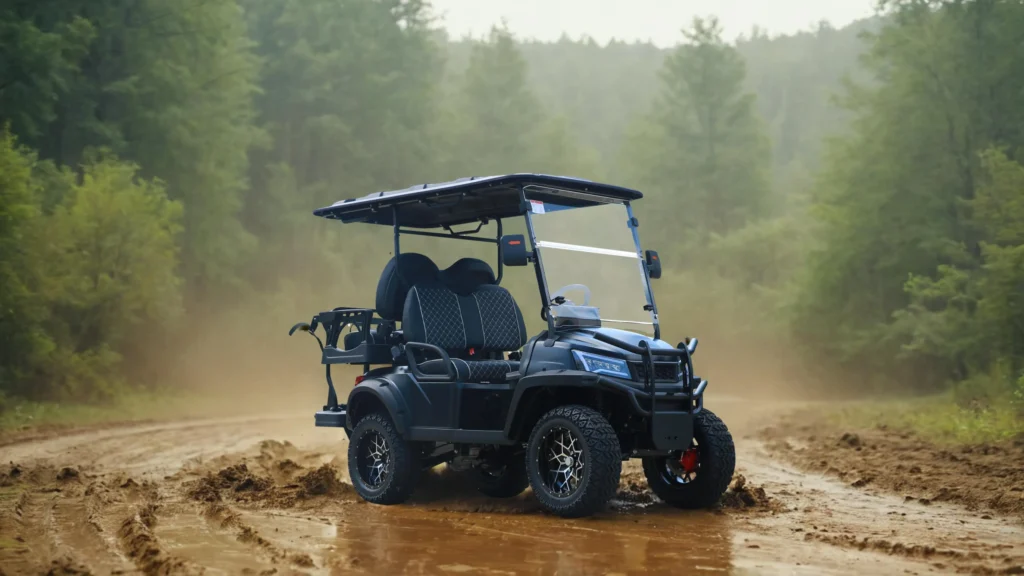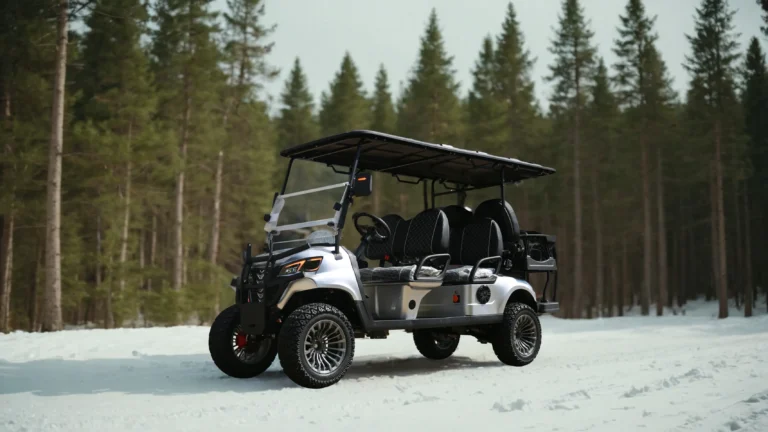Golf cart owners often ask why chargers are not waterproof , given that they are used outdoors. The lack of waterproofing can cause safety issues and damage, so it’s a good question.
Golf cart chargers are not waterproof because they need ventilation to dissipate heat. If they were waterproof, they would not be able to vent, which would cause them to overheat and not work properly. Therefore, they need to be protected from moisture.

Why Can’t Golf Cart Chargers Be Designed as Waterproof?
Golf cart chargers are designed with specific operational and structural needs. The primary need is to manage the heat generated while charging. Venting is necessary to keep the charger cool and operating safely and efficiently. If the charger were sealed to be waterproof, it would not be able to vent, and the heat generated while charging would cause it to overheat. This could damage the charger and create a safety hazard.
Additionally, the internal electronics need to stay cool to work properly. Sealing the charger to make it waterproof would require a significant redesign to include alternate cooling systems, which are expensive and difficult to implement. Therefore, most manufacturers design their chargers to be well-ventilated to keep the charger cool and operating efficiently, rather than waterproof.
Can Golf Cart Chargers Get Rained On?
Exposing your golf cart charger to rain is not a good idea. If your charger is not waterproof, it can short out, be damaged, or fail when it gets wet. This can cause safety issues and damage to the charger. It’s important to keep your charger dry.
Leaving your charger out in the rain can cause it to get wet inside, which can lead to corrosion of the internal components and damage the electrical integrity of the charger. It is best to use a cover or keep the charger in a dry place when not in use to avoid these issues.

What Happens if Golf Cart Batteries Get Wet?
The impact of water exposure on your golf cart batteries can be severe. When batteries get wet, they can corrode, which can damage the terminals and reduce the life of the battery. Water can also get into electrical connections and cause short circuits, which can be dangerous.
Wet batteries can also be less efficient and reliable, so it’s important to check them regularly for water exposure. If they do get wet, you should dry them out and have them checked by a professional to avoid long-term damage and safety hazards.
Is it Okay to Leave a Golf Cart Out in the Rain?
A common question many golf cart owners have is whether it’s okay to leave a golf cart out in the rain. While many golf carts are somewhat weather-resistant, leaving them out in the rain can cause damage over time. Water can get into electrical parts, including the battery compartment, and the charger, which can cause damage.
Using a waterproof cover or keeping your golf cart out of the rain can help it last longer. Prolonged exposure to rain can cause problems and may require expensive repairs or replacements.

Why Do Golf Cart Battery Chargers Get Hot?
One thing you may notice is that your golf cart charger gets hot when it’s in use. The heat is generated by the process of converting energy. As the electric current flows through the charger, it generates thermal energy. This heat must be dissipated to keep the charger from overheating, which is why the chargers have fans and vents to help keep them cool.
Adding waterproofing to the charger could block these vents and fans, which could cause the charger to overheat. This could reduce the performance of the charger and could be a safety hazard. Make sure your charger has plenty of room to breathe and don’t put it in a place where it could overheat.
How Does Waterproof Design Affect Charger Performance and Safety?
The potential for waterproofing chargers comes with some trade-offs. Encasing the charger to make it waterproof would block the fans and vents, which could cause the charger to overheat. This could be a safety hazard. The charger would need to have some other way to cool itself, which would add complexity and cost.
This change could also reduce the efficiency of the charger, making it less reliable. Waterproofing would also mean that you would need to pay more attention to maintenance and inspections to make sure the charger is still safe to use.

Why Isn’t a Waterproof Charger Always Practical?
While waterproof chargers sound great, they come with their own set of challenges. Adding waterproof features to a charger increases the cost and complexity of production. It also means more testing and potentially more maintenance.
For most people, a non-waterproof charger is just fine as long as you use and store it properly. The cost of a waterproof charger may not be worth the benefits, especially when you consider other options for protecting your charger from the elements.
How Can Users Protect Their Chargers from Water Damage?
There are a few things you can do to protect your golf cart charger. Use a weatherproof cover, store it inside, or put it in a location where it won’t get wet. These simple steps can help prevent water damage and extend the life of your charger.
Also, inspect your charger for signs of moisture or corrosion as part of your regular maintenance. By doing these things, you can mitigate the risks of not having a waterproof charger and maintain the safety and performance of your charger.

Conclusion
Golf cart chargers are not waterproof. They are designed to be ventilated to keep them cool and to perform at their best. However, there are things you can do to help keep your charger dry.




